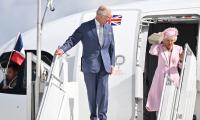Participatory budgeting is a process that meaningfully engages those who have traditionally been excluded from participation in important political decision-making processes. For the excluded, this exclusion has come with a price; the price is public funds not received and social development not achieved.
Budget-making involves taking very important public policy decisions. Deciding who gets how much from limited public funds is a process that can never be bereft of political considerations. As can usually be expected, those with influence over the decision-making process will make decisions that promote their own interest. What about the interests of those who do not wield influence over the process? What about the excluded and the disenfranchised? The irony is that those who are traditionally excluded from such important decision-making exercises are invariably those most in need of a redirection of public resources towards them.
Those traditionally accorded little influence in public decision-making processes can include the poor, minorities, women, youth, the uneducated, refugees, the stateless, etc. These groups are not only disadvantaged in dictatorships and totalitarian regimes, but can also be marginalized in democratic regimes.
Democracies come in different shapes and forms. The most popular current form of democracy is the representative or electoral democracy. The levels of political engagement in democracies are sometimes quite low. This can be best reflected in the low levels of voting percentages or voter turnout.
The extent of political disengagement can be seen in the levels of voter turnout in both developing and developed countries. For example, in the last US election the voting percentage was estimated at around 66 percent, and though this was the highest in several decades it still was not very high. The number in some US elections was much lower; for example in 1996 the turnout was just over 51 percent. Similarly, the voter turnout percentage in the last couple of elections in Pakistan was in the low to mid-50s.
Thus, there is a need to promote more inclusive democracies, as these will better engage citizens in political processes. The more engaged the citizens are, the more transparency, accountability, and development will ensue. Participatory budgeting (PB) can help in this regard.
The early instances of PB were seen in democratizing regimes in Latin America in the 1980s and 1990s. The most well known is the PB process undertaken by Porto Alegre in Brazil. The PB process began with the election of Olivio Dutra as the mayor of Porto Alegre in 1988. Dutra and his party ran successfully for several successive terms. During this time, thousands of citizens and several hundred grassroots organizations participated in the PB processes. The PB process highlighted and catered to the needs of the city’s impoverished residents, including the better provision of clean water, sewerage and transportation.
There are many varieties of PB initiatives and the initiatives can vary along the legal structure of the activity, the scale, the nature or the focus of the budgeting process, and the main actors involved in the process.
In terms of the legality of the process, the PB process can be formalized to varying extents. In some cases, it can be formally structured, legally sanctioned and monitored and in others it can be a more informal exercise. The spatial extent of the PB exercise can vary widely. The scope of the participation may extend to a neighborhood, or several neighborhoods, or a city or a region. Also, the size of the budget whose spending is being decided on could vary.
The nature of the project can also be widely different. The PB project may be focused on a specific public works project or a general thematic area. For example, the public works project could be a specific health facility in a certain city or it could be a themed approach, such as generally promoting primary education in a rural area.
Another influential parameter of variation is the kind of actor driving the PB process. The government is usually one of the prime actors in the process; the level of government can vary from a municipal, district, division, province or federal level. In addition to the government, the other main actors that can participate in a PB process include individual citizens, community organizations, civil society organizations, etc.
To better understand the practicality of PB as a viable form of inclusive decision-making, it is best to look at some of the practical instances of this activity and the lessons that can be garnered from these instances.
Some important qualitative and survey research in the 1990s in Brazil showed that one practical benefit that was seen in PB exercises was that it did help foster political participation. Women were better represented in PB processes than in traditional political institutions, such as political parties and parliaments. Similarly, the majority of PB community delegates had less than a high school level education. Interestingly, research showed that the PB process could be at odds with elected representatives. This antagonism is very understandable because the elite levels of politics and the grassroots level can diverge on their views on allocations of resources.
Another point revealed in the research is that people participating in the PB process were mostly not very interested in learning about responsibilities, rights and broad social policies but were quite practical in their interest in small tangible and on-ground infrastructure projects.
The PB process, like any innovative political initiative, faces constraints and limitations. One reality is that there is a dependence on the government to progress things forward, and the government remains powerful in this asymmetric relationship. The PB process also takes time and costs money. Sometimes the time frame can be several years while many participatory budgeting programs, especially those in initial stages of development, have had mixed results; programs that have endured for more than five years have usually resulted in important achievements.
Participatory institutions and processes can provide citizens with the opportunity to work directly with governments and close working relationships are frequently forged; these later allow for fruitful negotiations and possible administrative reforms.
PB when done effectively will involve marginalized populations in expressing their views to a broader audience on public issues. This will promote more inclusive public debate and deliberation. The PB process can provide a mechanism for traditionally excluded groups to influence the prioritizing of public spending. On a broader level, the participants of the process will get an opportunity to understand government decision-making processes and inroads into a meaningful engagement in policymaking, implementation and monitoring can be fostered.
For Pakistan, it may be opportune to pilot a few different designs of PB in a few small cities. The results should then be studied and improvements incorporated into a Pakistan-relevant PB model that can then be more widely applied. If done right PB can, in addition to promoting inclusive decision-making, also promote transparency, accountability and help reduce inefficiency and corruption. PB thus has the potential to improve government performance and the lives of Pakistanis.
The writer heads a university-based policy centre in Islamabad.
The cases of Attabad Lake and Gwadar simply highlight the many tragedies that exist around the country
Reaffirming loyalty to democracy as a problem solver can be a good starting point
Unfortunately, Pakistani films and TV dramas have seldom ventured beyond domestic intrigues and love triangles
A woman walks past a building of the International Monetary Fund. — AFP/FileThe annual and spring meetings of the...
Late Benazir Bhutto's daughter Asifa Bhutto Zardari addresses the Christian community in Bihar Colony on January 23,...







